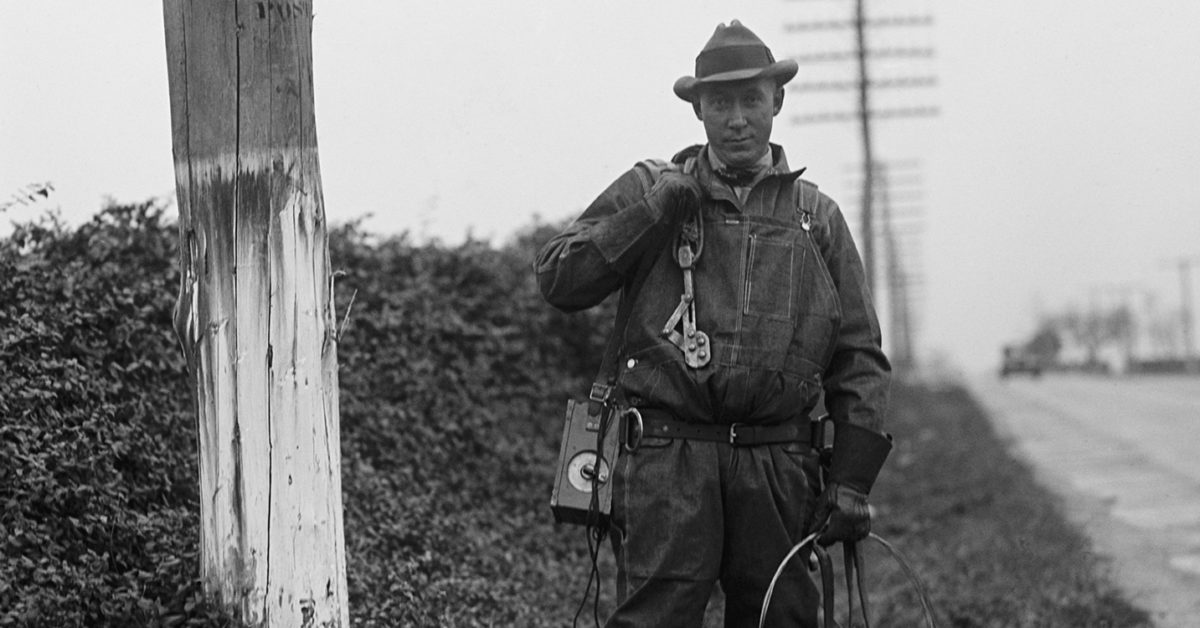How Air Force One Forever Changed Cable – Part 1

Signal Leakage in Cable Networks, a Long and Winding Road
Cable is a unique communications medium that has evolved from a rudimentary patchwork of transmission lines and components devised by an industrious group of technology pioneers decades ago into the leading broadband juggernaut that it is today. The remnants of this journey are still evident in many aspects of cable networks today including signal leakage technologies, the writings below are meant to serve as both entertainment and education on how we got to where we are today.
The Early Days of Signal Leakage
Prior to 1976 the cable plant consisted of approximately 19 analog channels. The low-band frequency ranged from 54-88 MHz, the high band from 174-216 MHz. In this timeframe cable operators didn’t yet have any concerns about signals leaking out of their plant, but they did have problems created by broadcast signal entering into their plants creating low frequency beats on their subscribers channels. Finding where these off-airs were entering the plant was difficult, so innovative Tech’s began inserting an FM modulated carrier into the downstream producing a tone that could be detected when leaking out of the plant through the same shielding weaknesses. This carrier was AM modulated by a 5dB step attenuator stepping through a 25dB range. The tech then tuned his car radio to the receive frequency, listened for the five steps, and when they were all present, he assumed he was close to the leakage source. There was some art to using this technique, but it worked well enough and the cable leakage detection technology was born!
Aviation Interference Drives Signal Leakage Test Mandate
In the late 1970’s and early 80’s “push-pull” and feedforward amplifiers were introduced which allowed the cable industry to add a 108 – 174 MHz mid-band to the cable lineup. This new band overlapped with critical aviation frequencies, but since the cable system is a self-contained sealed network there shouldn’t have been any issues with the overlapping channel frequencies. Two well-documented aviation incidents proved this theory wrong.
The first took place in Harrisburg, PA in 1976. A commercial aircraft reported to be at 25,000 ft experienced interference with air navigation, presumably VHF Omnidirectional Ranging (VOR) signaling which operated between 108 – 118 MHz. Remember that mid band that was just added?
In response to this incident, the FAA (established 1958), who owned the frequencies insisted that the FCC force the cable industry to vacate any frequencies used for air navigation. The cable industry assured the FCC (founded 1934), that the industry would be self-policing and would eliminate the issue. Some of you might remember the Wavetek Cuckoo warbling all throughout the plant in those early days of leakage. Fast forward to 1979 when the industry decided to offset the video carrier +/- 12.5 or 25 kHz to remove the overlap of the air nav receivers mitigating about 50% of the leakage problem. The reason for that amount of offset was because the receivers used in the aircraft typically had a 25 kHz measurement bandwidth. Offset the carrier, the plane would be much less likely to detect the signal egress from the cable system.
And Then Came Flint Michigan
The other incident took place over Flint Michigan in 1980. This time, a plane navigating off a beacon experienced a break in squelch while flying overhead. This might be an urban legend but a source who worked in the Flint Michigan system at the time said the plane was Air Force One (the US Presidents airplane), which understandably caused the entire Detroit FCC office to converge on Flint to find the culprit. After driving out the plant, the FCC found approximately 10,000 leaks and ordered about 25% of the system shut down. At the time the system was using a multi-port tap from Michigan Bell. These taps had a screw-in plate and a two-inch center conductor and were known to leak like a sieve. A complete rebuild took place and the system was back up and running in record time. When this incident happened, the FAA once again requested that the air nav frequencies be vacated. The FCC instead issued its first Report and Order in Docket 21006, which established todays requirements for CLI (Cumulative Leakage Index). This index is a mathematical summation of leakage in a system designed to approximate the interference to aircraft flying overhead.
Part 1 of a 3-part series, see the other posts in this series:
- The Birth of Dedicated Signal Leakage Systems – Part 2
- Cable Leakage Systems Continue to Evolve With the HFC – Part 3
Learn more about VIAVI Cable Signal Leakage
Be sure to follow VIAVI on LinkedIn to see the rest of this blog series

